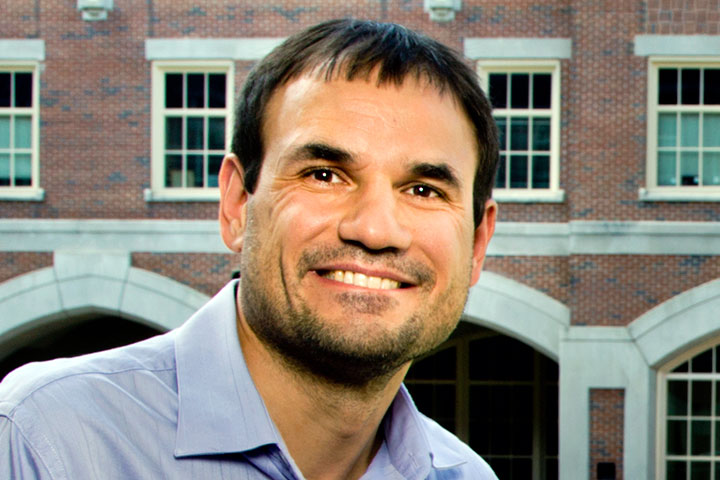
New research reveals the shape of our brain can provide surprising clues about how we behave and our risk of developing mental health disorders.
Florida State University College of Medicine Associate Professor Antonio Terracciano joined a team of researchers from the United States, United Kingdom and Italy to examine the connection between personality traits and brain structure. Their study, published today in the journal Social Cognitive and Affective Neuroscience, looked at differences in the anatomy of the cortex (the outer layer of the brain) as indexed by three measures — the thickness, area and amount of folding in the cortex — and how these measures related to the five major personality traits.
The traits include neuroticism, the tendency to be in a negative emotional state; extraversion, the tendency to be sociable and enthusiastic; openness, how open-minded a person is; agreeableness, a measure of altruism and cooperativeness; and conscientiousness, a measure of self-control and determination.
The study involved an imaging dataset from more than 500 individuals made publicly available by the Human Connectome Project, an ambitious effort by the National Institutes of Health to map neural pathways underlying human brain function.
“Evolution has shaped our brain anatomy in a way that maximizes its area and folding by reducing thickness of the cortex,” said senior author Luca Passamonti from the Department of Clinical Neurosciences at the University of Cambridge. “It’s like stretching and folding a rubber sheet — this increases the surface area, but at the same time the sheet itself becomes thinner. We refer to this as the ‘cortical stretching hypothesis.’”
“Cortical stretching is a key evolutionary mechanism that enabled human brains to expand rapidly while still fitting into our skulls, which grew at a slower rate than the brain,” Terracciano added. “Interestingly, this same process occurs as we develop and grow in the womb and throughout childhood, adolescence and into adulthood: The thickness of the cortex tends to decrease while the area and folding increase.”
In other research, Terracciano and others have shown that as people get older, neuroticism goes down — people become better at handling emotions — while conscientiousness and agreeableness go up — people become progressively more responsible and less antagonistic.
The researchers found that high levels of neuroticism, which may predispose people to develop neuro-psychiatric disorders, were associated with increased thickness as well as reduced area and folding in some regions of the cortex, such as the prefrontal-temporal cortices.
In contrast, openness, which is a personality trait linked with curiosity, creativity, and a preference for variety and novelty, was associated with the opposite pattern: reduced thickness and an increase in area and folding in some prefrontal cortices.
Brains imaged as part of the Human Connectome Project all belonged to healthy individuals 22-36 years old with no history of neuro-psychiatric or other major medical problems. The relation between brain structure and personality traits in young and healthy people can change as people age and provide a reference frame for better understanding the brain structures in conditions such as autism, depression or Alzheimer’s disease.
“Linking how brain structure is related to basic personality traits is a crucial step to improving our understanding of the link between the brain morphology and particular mood, cognitive or behavioral disorders,” Passamonti said. “We also need to have a better understanding of the relation between brain structure and function in healthy people to figure out what is different in people with neurological and psychiatric disorders.”
Reference
Riccelli, R et al. Surface-based morphometry reveals the neuroanatomical basis of the five-factor Model. Social Cognitive and Affective Neuroscience; DOI: 10.1093/scan/nsw175




